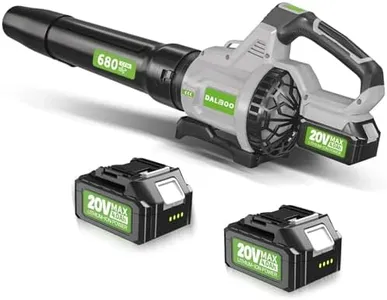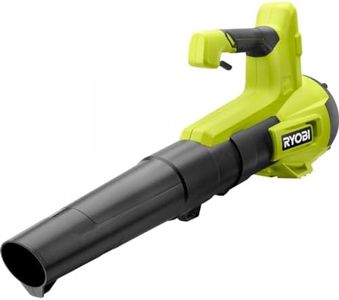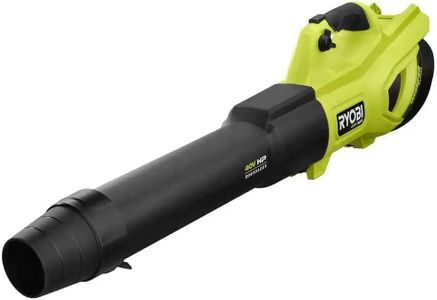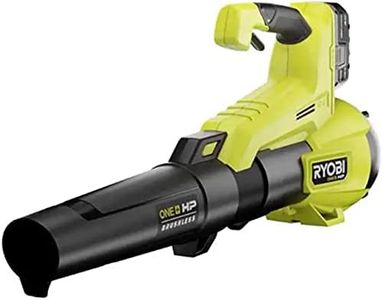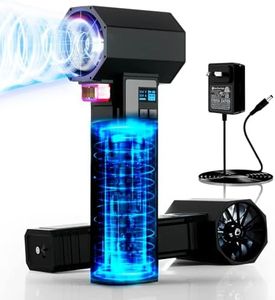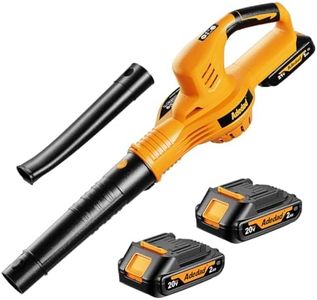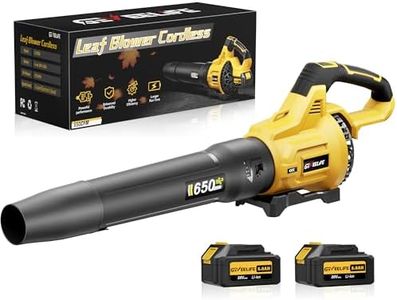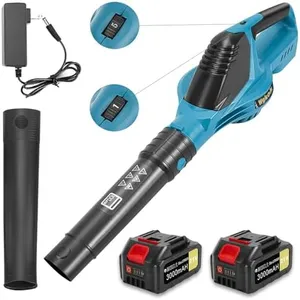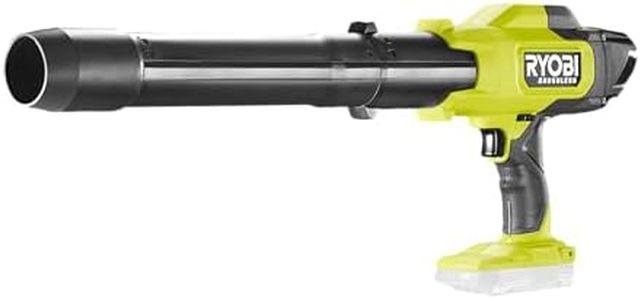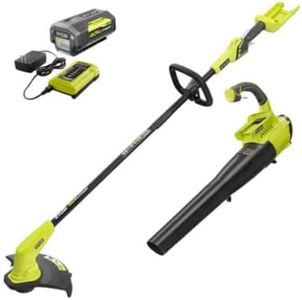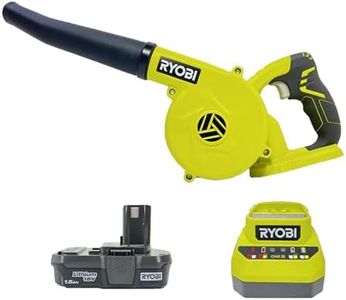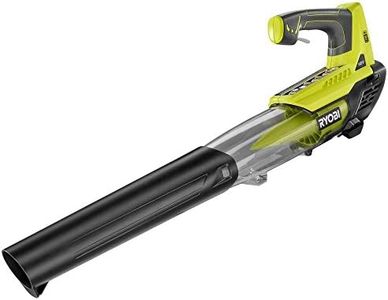10 Best Ryobi Battery Leaf Blowers 2025 in the United States
Our technology thoroughly searches through the online shopping world, reviewing hundreds of sites. We then process and analyze this information, updating in real-time to bring you the latest top-rated products. This way, you always get the best and most current options available.

Our Top Picks
Winner
RYOBI 40-Volt Lithium-Ion Cordless Variable-Speed 120 MPH 550 CFM Leaf Blower (Tool-Only); Battery and Charger Not Included, Green, RY40LB01B
The RYOBI 40-Volt Lithium-Ion Cordless Leaf Blower is a powerful tool designed for those who already own a Ryobi 40V battery and charger. With a high air speed of 120 MPH and an air volume of 550 CFM, this blower is well-suited for managing both damp and dry leaves, as well as yard debris. Its performance rivals that of a 25cc gas blower, making it a strong contender as a gas alternative.
The blower offers up to 75 minutes of runtime on a low setting with a 4Ah battery, which should be adequate for most small to medium-sized yards. The variable speed trigger provides control over the airflow, allowing for delicate adjustments when needed and full power for tougher tasks. Weighing just 5.5 pounds, it is lightweight and easy to handle, reducing fatigue during extended use.
Additionally, the noise level is relatively low at 59 dB, making it a more neighbor-friendly option. However, the product does not include the battery and charger, which means an additional expense if you do not already have them. The integrated keyhole for hanging provides a convenient storage solution, and the design is user-friendly and straightforward. This blower is a good fit for those looking to replace a gas blower or supplement their existing Ryobi 40V tool set.
RYOBI ONE+ 18V 100 MPH 325 CFM Cordless Battery Variable Speed Jet Fan Leaf Blower (Tool Only)
Most important from
56 reviews
The RYOBI ONE+ 18V 100 MPH 325 CFM Cordless Battery Variable Speed Jet Fan Leaf Blower is a versatile tool designed for convenience and efficiency in yard maintenance. With an air speed of 100 MPH and air volume of 325 CFM, it provides a decent performance for clearing leaves and debris. The jet fan design and variable speed trigger allow for better control over airflow, making it suitable for various tasks around the yard.
It operates at 18 volts, which may not be as powerful as some higher voltage models, potentially affecting its performance on tougher jobs. The weight of the blower is 7.78 pounds, which is manageable but may become tiring during extended use. Additionally, it should be noted that this product does not include the battery or charger, which need to be purchased separately. This could be a downside for those who do not already own other RYOBI ONE+ tools.
On the upside, the blower is compatible with all RYOBI 18-Volt ONE+ batteries, so it's a good option for users who already have these batteries. The hanging hook adds to the convenience of storage. With a noise level expected to be moderate given its battery-powered nature, this leaf blower is a practical option for small to medium-sized yards.
Most important from
56 reviews
RYOBI 40V HP Brushless Whisper Series 160 MPH 650 CFM Cordless Battery Leaf Blower (Tool Only)
Most important from
25 reviews
The RYOBI 40V HP Brushless Whisper Series 160 MPH 650 CFM Cordless Battery Leaf Blower is a robust tool designed for medium to heavy-duty yard work. With impressive air speed of 160 MPH and air volume of 650 CFM, it can handle large volumes of leaves and debris efficiently. The tool features a turbo button for maximum power, a variable speed trigger, and cruise control for added convenience during use.
Additionally, it comes with a speed tip attachment to further enhance air speed, making it versatile for different tasks. However, it is worth noting that the battery is sold separately, which means an additional purchase is required to use the blower. For the best performance, it is recommended to use a RYOBI 40V 4.0 Ah or higher battery. At 9.28 pounds, it is relatively lightweight, which should make it easier to handle for most users.
A significant advantage is its Whisper Series design, which claims to be 85% quieter than gas-powered alternatives, making it a good choice for noise-sensitive environments. This leaf blower is compatible with the RYOBI 40V platform, meaning you can use the same battery with over 75 other RYOBI products, adding value if you already own or plan to buy more tools from this line.
Most important from
25 reviews
Buying Guide for the Best Ryobi Battery Leaf Blowers
When choosing a Ryobi battery leaf blower, it's important to consider several key specifications to ensure you select the best model for your needs. Understanding these specifications will help you make an informed decision and find a leaf blower that is efficient, easy to use, and suitable for the tasks you have in mind.FAQ
Most Popular Categories Right Now
